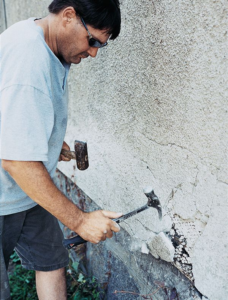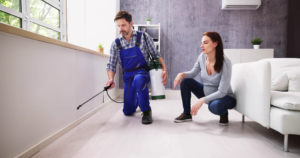SEO is an ongoing process of research, testing and optimization. It is also a constantly changing field, with Google updating its algorithm frequently. Staying current with the latest SEO news, research and best practices should be a regular part of any marketer’s schedule. Click https://www.rankboss.com/ to learn more.
The main components of seo include keyword research, content marketing and link building. These elements are based on the assumption that search engines reward websites with higher rankings for providing quality content to their users.

Keywords are the words and phrases that search engine users type into a search box in order to find information online. These keywords are then used to match the content on a site or blog to the search engine user’s intent and context. Keywords are the foundation of SEO, and it is important to understand the importance of choosing the right ones.
When it comes to choosing keywords, the first thing you need to do is identify your audience. Understanding their demographics, interests, and pain points will help you choose the right keywords to target. This will ultimately result in better quality traffic, which can lead to more sales and increased ROI.
Unlike in the past, where keywords were the primary means of communicating to search engines the topic of your content, today’s algorithms take into account more than just keywords. For example, Google’s Hummingbird update of 2013 introduced semantic search, which took into consideration the meaning behind a query instead of just its individual words. This helped the algorithm to provide relevant results that truly answered a searcher’s needs.
Another key factor when it comes to selecting keywords is their volume. A keyword that is searched often will have higher competition and be more difficult to rank for. To avoid this, you should try to focus on long-tail keywords that have less volume but are still highly relevant to your business.
It is also important to consider your local audience when choosing keywords. This is particularly true if you have a brick-and-mortar location or service area. For example, if you are selling tile, you should target keywords related to interior design, building materials and contractors. In addition, you should look for local keywords that include a city or neighborhood name or zip code (i.e., “tile installer Seattle”).
Once you have identified your audience and chosen your keywords, it is important to use them in a natural and consistent manner throughout your content. However, be careful not to overuse them, as this can be seen as spammy and could damage your rankings. For this reason, it is best to stick with one or two primary keywords per piece of content and branch out from there.
Content
The content on your website is the most important element of your SEO strategy. It is the foundation of your entire digital marketing campaign and needs to be high-quality, relevant, and engaging. It should also be optimized for the keywords that are most relevant to your business and its target audience. This will help you attract more targeted traffic and increase your search engine visibility. To optimize your content, you should include keyword research, use the right tone of voice, and incorporate relevant visuals to enhance its appeal.
Achieving a seamless collaboration between content and SEO teams is essential for businesses to maximize their visibility in the digital landscape. By establishing common goals, emphasizing quality, leveraging analytics, and encouraging open feedback, teams can create a seamless strategy that meets audience expectations and drives growth.
Content is the most important aspect of SEO, and it plays a crucial role in increasing brand authority, driving engagement, and converting customers. Content helps you reach and engage your audience, and it establishes your expertise in a topic. It also helps you build trust with your audience, which is a critical factor in boosting organic search rankings.
In order to produce effective content, you need to understand your audience’s pain points, interests, and mindset. This will allow you to create valuable content that speaks to them and provides solutions to their problems. This will improve your content’s visibility and drive traffic to your website.
Another way to improve your content is to add internal links to other pages on your website. These can be to other articles on your blog, to pages that sell a product or service, or to related external websites. This is a great way to boost your SEO without spending money on PPC ads.
It is also important to keep in mind that SEO is a dynamic process and requires regular updates. This is because search engines frequently update their algorithms, which can change the way that they rank content. Therefore, it is necessary to keep up with these changes in order to stay competitive.
Link building
Link building is an important component of any SEO strategy, but it can be difficult to understand and implement effectively. In addition to boosting your search engine rankings, it can also increase the number of users visiting your website. However, it is important to remember that link building should be a part of a comprehensive SEO strategy and not an end-all solution to your marketing needs.
Link building can take many forms, but the most common are guest blogging, link reclamation, broken link building, and content marketing. Guest blogging is a great way to build links and establish your expertise in your industry. It can also help you to create an audience that is interested in your products and services. But be careful to avoid over-promoting your brand or you may be seen as spam.
Another great way to build links is to find broken pages on other websites and create an alternative page on your site. You can then ping the site that has the dead link and ask them to update it with your new link. This is known as broken link building, and it is one of the most effective strategies for gaining new links.
Other techniques for building links include competitor research, finding unlinked mentions of your brand, and contributing to HARO and journalist requests. In general, the best approach is to build links organically by creating high-quality content and promoting it. This is the most effective way to increase the number of referring domains and improve your ranking in search engines.
It’s also important to note that you shouldn’t engage in shortcuts like buying links. These practices are against Google’s guidelines and can have a negative impact on your SEO. Instead, focus on building natural links that add value to your website and the user experience. This will lead to long-term success and increased organic traffic.
Analytics
Using SEO analytics tools can help you track the effectiveness of your strategy and see how it performs. These tools provide information about website traffic and content performance, as well as other metrics such as time on page and conversions. They can also help you identify the best keywords to target in your content. There are hundreds of tools that can improve, manage and report on your SEO efforts. Some are free, while others offer paid subscriptions. The most popular free tool is Google Analytics, which has a variety of features that can help you optimize your SEO.
Whether you want to analyze the overall performance of your website or find specific areas that need improvement, SEO analytics tools can help you get the job done. SEO tools provide valuable insights about how people interact with your site, which can be used to improve SEO and improve the user experience. They are also useful for tracking results and identifying trends.
The most effective SEO strategies are those that are based on data and proven to work. A well-designed SEO campaign includes an analysis of the client’s business goals, technical analysis of the site, keyword research and analysis of search engine results pages (SERPs). These audits can reveal areas that need improvement, such as meta tags, URLs, onsite optimization and E-A-T.
Google Analytics is a powerful tool that can help you monitor SEO performance and determine how your campaigns are performing. In addition to capturing data about visitor behavior, Google Analytics can help you track and report on SEO metrics, such as site traffic and page rankings. It can even help you spot issues, such as 404 pages, that are blocking your SEO progress.
If you’re not using Google Analytics yet, it is important to set up an account to start tracking your SEO performance. Once you have an account, you can access the Search Console and the Analytics Dashboard. To view your content analytics, go to the Behavior menu and click on Site Content, then All Pages. This will display a list of your website’s top-performing and least-popular pages. You can also filter by keywords to see the most popular searches on your website.







